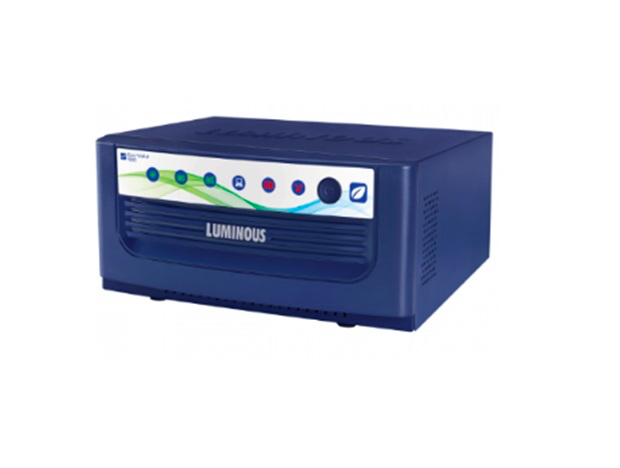Follow These 4 Tips To Choose The Best Inverter In India

Planning to buy an inverter but not sure about how to choose the best inverter in India? Well, we understand that with the wide range of options available out there in the market how difficult it is to choose an inverter that best suits your requirement. But, don’t you worry because in this post we will give you a detailed breakdown of the steps you should follow to choose the best inverter in India.
1. Find out how much power you would require during the power cut.
The first thing you need to do is calculate your power requirement. To calculate the same you need to make a list of electrical appliances that you would need at the time of a power cut.
Let’s say you would require the following appliances
3 Tube lights – 40 watts each
3 Fans – 70 Watts each
8 LED lights – 7 watts each
1 Refrigerator – 140 Watt each
1 LED television – 70 watts each
Total Power Requirement = (3*40)+(3*70)+(8*7)+(1*140)+(1*70)= 596 Watts
2. Calculate what VA Rating you would require.
After calculating the power requirement you need to find out what should be the required VA Rating of the inverter you need to purchase. The VA rating tells you the output an inverter can deliver.
Use this formula to calculate VA Rating
VA Rating = Total Power Requirement/Power Factor
The power factor varies anywhere between 0.65-0.8. In this case we are assuming the power factor as 0.7.
This means for a power requirement of 596 Watts, the required VA Rating = 596/0.7 = 851 VA
Remember – Always buy an inverter with a 10-20% higher VA rating because chances are that your power requirement may increase in the near future. So let’s say if the VA Rating as per the formula is 851 VA, you can opt for an inverter with a capacity of 1100VA.
3. Determine what battery capacity you require.
Now that you know your power requirement and your VA Rating, you need to calculate the battery capacity. Battery capacity is a measure of the amount of charge a battery can hold. The battery capacity is calculated in Ampere Hours.
An average Indian household requires a battery capacity anywhere between 60 Ah to 220 Ah.
Formula for calculating battery capacity
Battery capacity = (power requirements in watts *backup-time*aging factor) / (battery voltage*battery efficiency*inverter efficiency)
We already know that the power requirement is 596 Watts.
Let’s say you would need a power back up of 2 hrs.
Here are some constants
- Battery Voltage (for a lead acid battery) = 12 V
- Inverter aging factor=1.25
- Battery efficiency=0.8
- Inverter efficiency = 0.8
Applying these values to the formula of Battery capacity
Battery capacity = ((596*2*1.25) / (12*0.8*0.8) = 194 Ah (or 200 Ah approx)
Note – Just like it’s advisable to buy an inverter with a higher VA rating, keeping the future requirement in mind, similarly, one should buy a battery with a higher battery capacity. That’s because a battery’s capacity degrades with time, and therefore a battery with 5-10% higher battery capacity would help.
4. Choose a Battery Type
After you are done calculating the battery capacity you need to select the right battery type. There are two main types of battery technologies available in the market, a flat plate battery and a tubular battery. Your choice of battery type would depend on the following factors.
- Frequency and duration of power cuts in your area
If you live in an area where there are frequent but short duration power cuts then you can go with a flat plate battery. However, if you live in an area where there are long but rare power cuts then you should go with a tubular battery as it can hold far more charge as compared to a flat plate battery.
- Longevity
If you want a battery with a longer warranty then go for a tubular battery, however if you are okay with a battery with shorter lifespan and lesser warranty then you can go for a flat plate battery.
- Budget
A flat plate battery is light on the pocket. A tubular battery on the other hand is a high performance battery, and therefore, it is costlier as compared to a flat plate battery.
- Maintenance
A tubular battery requires far less maintenance and water top ups as compared to a flat plate battery.
Before you buy a UPS inverter, check out “ Load Calculator” on Luminous India’s website. It will tell you the Inverter VA rating and battery capacity that’s best suited for your power requirement. All you need to do is select the appliances that you would require during the power and the calculator will recommend you the required inverter VA rating and battery capacity. Once you know that, you can choose the best inverter from Luminous’ wide range of inverter battery combos.




